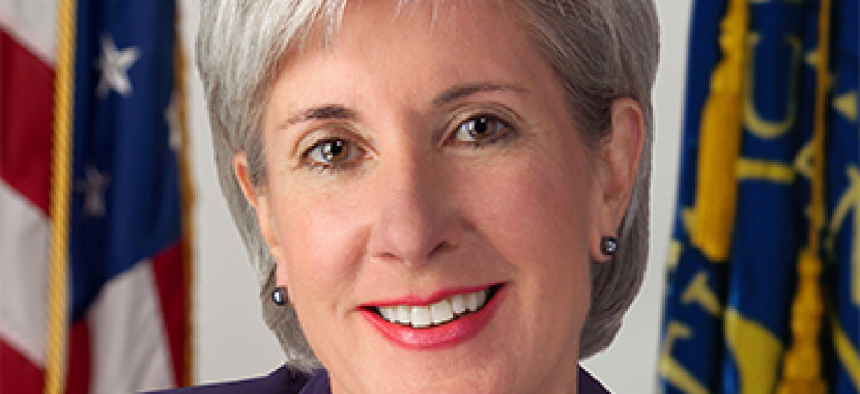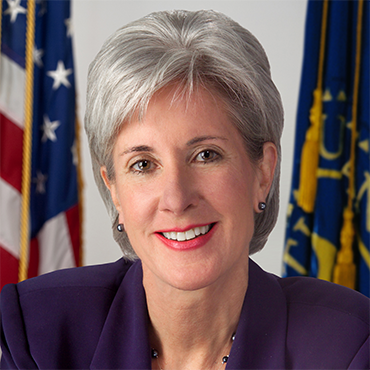Sebelius dials back expectations on 'tech surge'

During congressional testimony, Kathleen Sebelius warned that the needed improvements to HealthCare.gov are too numerous to address completely in a short time.

The nation's top health care official appeared to be trying to lower expectations of how well the troubled HealthCare.gov website would function by the time an ongoing "tech surge" works through a list of problems scheduled to be competed at the end of November.
"We are into the list," Health and Human Services Secretary Kathleen Sebelius told the Senate Finance Committee on Nov. 5. "We're not where we need to be. It's a pretty aggressive schedule to get to the entire punch list."
Quality Software Services Inc., which was tapped as general contractor on the project after the initial launch, is working with integrated teams of government employees and contractors to implement fixes, according to a recent press update from the Centers from Medicare and Medicaid Services. Former administration official and health care entrepreneur Jeff Zients is quarterbacking the effort.
While it has not been publicly disclosed what QSSI is being paid for taking on the additional responsibilities and leading the tech surge, the firm received a $10 million task order recorded in the government contracts database Govini on Oct. 24 for "ACA/ACO testing."
According to Sebelius, the QSSI team has identified a "couple hundred" functional fixes and they have been grouped according to their priority. The site is being taken down from 1 a.m. to 5 a.m. EST on a daily basis to implement fixes. Other patches are being put in place while the site is live.
Cybersecurity hawks Sen. Dianne Feinstein (D-Calif.) and Rep. Mike Rogers (R-Mich.), among others, have suggested suspending access to the site during the entire period of the tech surge. But the internal IT team at CMS and the contractors have advised Sebelius that there is no technical reason to take the site offline while fixes are made.
"I'm relying on the advice of not only the inside team and contractors, but outside experts who have come in to take a look at the system," Sebelius said. "Given that functionality fixes, the codes, have to be written in batches, you don't gain much from just taking the whole system down for a week, a couple of weeks. It's better to do this on an ongoing basis."
One of those experts, CMS CIO Tony Trenkle, will leave the agency on Nov. 15 to take a position in the private sector, according to a report by the New York Times that was confirmed by CMS spokesperson Julie Bataille on a conference call with reporters. Dave Nelson, who heads the Office of Enterprise Management, will step in as acting CIO. Deputy CIO Henry Chao, who was the point of contact for contractors on HealthCare.gov, continues to help oversee repairs to the site.
Sebelius also confirmed that she did not discuss the plans to obtain a temporary Authority to Operate certification for the Federally Facilitated Exchanges portion of the HealthCare.gov service with CMS Administrator Marilyn Tavenner. FFE allows users to create accounts and shop for and purchase insurance, and delivers enrollment information to insurance carriers.
Tavenner made the decision to obtain temporary authorization on the advice of her senior IT and operations team, Sebelius said, because end-to-end testing was not performed on the full system, including components that were pulled back from the initial launch. These include a function that allows users to browse plans before creating an account, and a Spanish language version of the site.
While Sebelius said she was not in the loop on the authority to operate, she told the committee that the White House "was aware of operational issues involving end-to-end testing," but that she didn't have specifics.
The administration indicated that enrollment numbers for the first month would be released next week. A collection of meeting notes from a CMS "war room" team overseeing the launch suggests that numbers are low -- from a trickle during the first week, growing to as many as 70,000 by Oct. 9 -- Compared with Congressional Budget Office projections of 800,000 enrollees by the end of October.
Sebelius noted that plans are in place to re-invite some of the users who begin filling in their information but gave up during the buggy application process. She didn't offer details on how it would work, but she expressed a particular desire for younger visitors to enroll via this process.
"We know that a lot of young folks have impatience with any technology that doesn't work instantaneously, so that audience is particularly important," to contact once the site is back online, Sebelius said.
Plenty of younger, healthier enrollees are essential to making the system economically feasible. If enrollees are skewed toward older, sicker customers, costs of coverage would increase.
NEXT STORY: TechAmerica to press on despite departures



